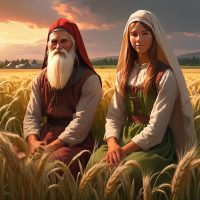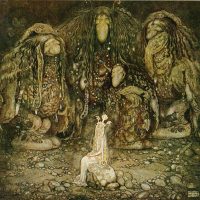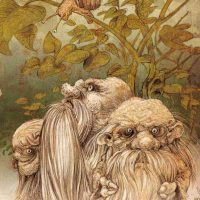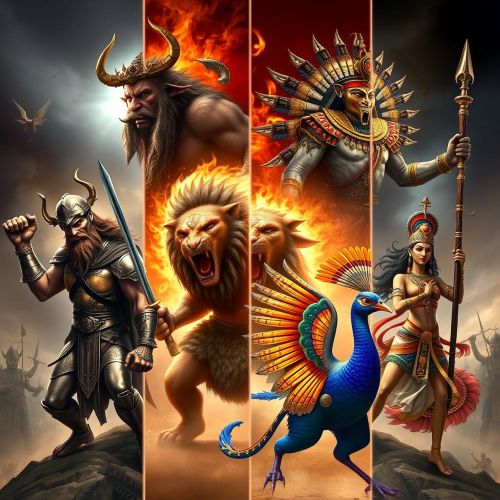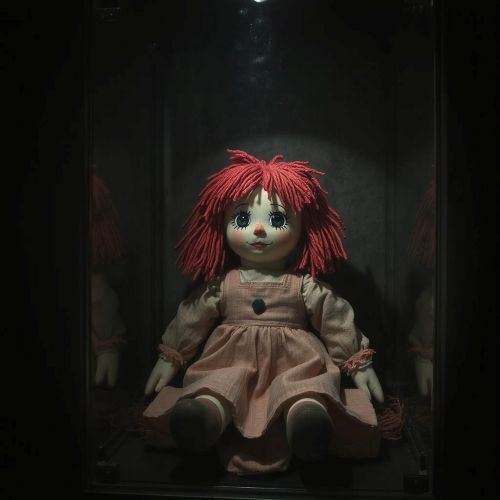Barstukai : The Baltic Gnome
Listen
At a glance
| Description | |
|---|---|
| Origin | Baltic Mythology |
| Classification | Spirits |
| Family Members | N/A |
| Region | Lithuania |
| Associated With | Fields, Harvest |
Barstukai
Introduction
Barstukai, also known as Barzdukai or Bezdukai, are captivating creatures rooted in the rich tapestry of Baltic mythology. Believed to inhabit the natural world, whether in fields, woods, or beneath the sheltering branches of trees, they represent an integral part of the ancient Baltic belief system that persisted through Christianization and into Baltic folklore. Amidst the myriad deities and mystical entities of Baltic mythology, Barstukai emerge as enigmatic figures veiled in mystery and allure. Described often as forest spirits or guardians, they have captivated scholars and storytellers across generations with their elusive nature and intriguing attributes. Within the vast realm of Baltic folklore, the Barstukai hold a unique position, symbolizing the interconnectedness between humanity and the natural world, particularly within the Sudovian branch of mythology.
Physical Traits
The Barstukai, depicted as miniature humanoids, are often described as no larger than an uolektis, a traditional Lithuanian measurement roughly equivalent to 60 centimeters (2 feet), with some accounts suggesting they could be even smaller, barely reaching the size of a finger. Despite their diminutive stature, they exude a certain presence, notably with long beards reaching their knees, lending them an air of wisdom and age. Their attire varies in depictions, but they are frequently shown wearing red hats, adding vibrancy to their appearance. Interestingly, mentions of female Barstukai adorned with white veils suggest a gender distinction within the race.
Moreover, Barstukai are commonly depicted as humanoid beings with distinct animalistic features intertwined with their form, often having the lower body of a wolf or bear, symbolizing their affinity with the wilderness. Their upper bodies maintain a human-like appearance, adorned with fur or feathers reminiscent of their forest habitat. Their eyes gleam with ancient wisdom, reflecting a deep connection to nature and the supernatural. Legends attribute to them an aura of both awe and intimidation, with their presence often sensed rather than seen, whispers of their passage echoing through dense woodlands and shadowy groves. Some tales even suggest they possess the ability to shapeshift, seamlessly blending into their surroundings and eluding the gaze of mortal onlookers.
Family
In Baltic mythology, Barstukai often emerge as solitary figures, guardians of the untamed wilderness who traverse the forests in solitude. However, glimpses of familial connections surface in accounts linking them to other supernatural entities like the spirits of the forest and the revered deities worshipped by Baltic peoples. Among these kindred spirits are the Leshy of Slavic folklore, sharing traits and attributes akin to the Barstukai, both entities inhabiting the wilderness depths, nurturing and safeguarding the natural realm. These familial bonds underscore the interconnectedness bridging various mythological traditions across Baltic and Slavic regions.
While explicit references to their family or lineage are scarce in available sources, Baltic mythology teems with diverse deities and creatures, each embodying unique roles and traits. It’s plausible that Barstukai are intertwined with other nature-dwelling beings within this mythological landscape. Not isolated entities, Barstukai are integral threads woven into a larger mythological tapestry. They are envisioned as loyal aides to Puškāns, also known as Puškaitis, the Baltic deity associated with agriculture, wealth, and prosperity. Serving as Puškāns’ faithful assistants, Barstukai ensure a plentiful harvest and safeguard the welfare of farmers. Their association with the harvest god illuminates their benevolent role as guardians of human livelihood.
Other names
In addition to Barstukai, these mystical creatures are sometimes known as Barzdukai or Bezdukai. The name “Barstukai” isn’t the sole identifier for these beings. Regional variations and linguistic nuances have spawned alternative appellations. “Barzdukai,” for instance, is another common term, with “barzda” translating to “beard” in Lithuanian, highlighting their notable facial feature. Furthermore, “Bezdukai” appears in certain sources, though the precise significance of this variation remains elusive. These names may fluctuate based on regional dialects and interpretations entrenched in ancient Baltic mythology.
Across different Baltic cultures, the Barstukai are recognized by various names, reflecting the rich diversity of folklore and linguistic customs within the region. In Lithuanian folklore, they often go by “Barstukai,” a term rooted in the Lithuanian word “barstytis,” signifying wandering or roaming. Conversely, in Latvian mythology, akin entities are dubbed “Mežabrāļi,” which translates to “Forest Brothers,” accentuating their role as guardians of the woodland realm.
Powers and Abilities
While specific powers and abilities of the Barstukai are not explicitly outlined in available sources, their portrayal as beings deeply intertwined with nature suggests an intimate connection with the earth and its elements. It’s conceivable that they were believed to influence natural phenomena or possess profound knowledge and insight into the natural world beyond human comprehension.
Endowed with a plethora of abilities commensurate with their role as guardians of the forest, Barstukai are reputed to possess superhuman strength and agility, enabling them to navigate the densest woodlands effortlessly and confront any intruders daring to threaten their domain. Their affinity with nature affords them the capability to commune with the spirits of the forest, commanding the flora and fauna to come to their aid in times of necessity.
Furthermore, Barstukai are reputed to harbor a deep understanding of ancient magic, adept at harnessing the mystical energies of the natural world to shapeshift, create illusions, and repel malevolent forces. Their proficiency in herbalism and healing arts is esteemed among mortals, who frequently seek their guidance and protection during times of illness or strife.
Modern Day Influence
The impact of Barstukai and other entities from Baltic mythology permeates the cultural and folk traditions of the Baltic region. Although belief in these creatures may have waned in modern times, they remain integral to folklore, literature, and cultural discourse. Their narratives provide insight into the ancient belief systems of the Baltic people, captivating scholars and mythology enthusiasts alike.
Despite the passage of time and the march of modernity, the legacy of Barstukai endures in the collective consciousness of Baltic societies. Their presence resonates in folk traditions, festivals, and rituals that honor the connection between humanity and the natural world. Tales of encounters with Barstukai persist in rural communities, serving as reminders of the importance of respecting and conserving the wilderness.
In Lithuania, the legacy of these mythical beings thrives in folklore, literature, and artistic expressions. Children’s tales frequently feature Barstukai as benevolent guardians of nature, while traditional Lithuanian crafts showcase wood carvings and sculptures depicting these enigmatic figures. Though shrouded in mystery, their association with prosperity and their role as aides to Puškāns underscore their significance within the Baltic pantheon.
Related Images
Frequently Asked Questions
What is lorem Ipsum?
I am text block. Click edit button to change this text. Lorem ipsum dolor sit amet, consectetur adipiscing elit. Ut elit tellus, luctus nec ullamcorper mattis, pulvinar dapibus leo.
What is lorem Ipsum?
I am text block. Click edit button to change this text. Lorem ipsum dolor sit amet, consectetur adipiscing elit. Ut elit tellus, luctus nec ullamcorper mattis, pulvinar dapibus leo.
What is lorem Ipsum?
I am text block. Click edit button to change this text. Lorem ipsum dolor sit amet, consectetur adipiscing elit. Ut elit tellus, luctus nec ullamcorper mattis, pulvinar dapibus leo.
What is lorem Ipsum?
I am text block. Click edit button to change this text. Lorem ipsum dolor sit amet, consectetur adipiscing elit. Ut elit tellus, luctus nec ullamcorper mattis, pulvinar dapibus leo.
What is lorem Ipsum?
I am text block. Click edit button to change this text. Lorem ipsum dolor sit amet, consectetur adipiscing elit. Ut elit tellus, luctus nec ullamcorper mattis, pulvinar dapibus leo.

